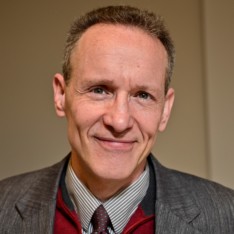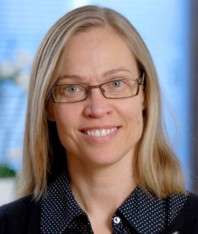Give Sweden a B- in Coronavirus 101

A student can score a D on the midterm exam and still merit a B- in the course. Sweden’s D on elderly care is distinct from its other actions in the COVID-19 crisis. It deserves an A on lockdown, for largely refraining and allowing citizens to exercise good, common sense. Many consider it a model worth emulating for post-lockdown democracies. Overall, Sweden gets a B-.
Perhaps that score of an A on lockdown will be disputed. Fine. But the more we learn about the elderly care challenge, the more we see that a lockdown and elderly care are distinct issues that bear little on each other.
Locking down would not have helped Sweden’s nursing homes. To get an A on nursing homes, you have to deal directly with preventing the spread of infection to the most vulnerable people, while maintaining 24/7 service to the oldest and frailest people in need of companionship and extensive high-touch care. Locking down does not answer that challenge. It can be counterproductive, for example, because a shutdown of schools and childcare leaves care workers with young children at home. Disruptions and confusion are exacerbated, not mitigated, by forced closures.
Many will say that we are being too lenient in giving Sweden a D on elderly care. And Sweden’s per capita COVID-19 death rate is exceeded only by those of Belgium, Spain, Italy, the United Kingdom, and France. And upwards of 70 percent of the COVID-19 death toll in Sweden has been people in elderly care services, primarily the nursing homes.
An inside look suggests that a grade of D- or an F would be unfair. A good friend of ours is at the administrative heart of the elderly care system in Stockholm. We have written a study that includes an extensive interview with Ms. Barbro Karlsson, who described the challenges in an open manner.
Ms. Karlsson explains that the nursing home challenge has two sides. First, nursing homes are where the country’s most vulnerable people collect. In Sweden, 88 percent of COVID-19 deaths are aged 70 or over, and upwards of 85 percent had at least one comorbidity. Stockholm offers ample at-home services for those who can still manage on their own. Only those who can no longer get by that way and who are in need are admitted to the nursing homes, which have full-time medical staff. As a result, in Stockholm the nursing homes in particular collect the most vulnerable, with an average age around 85 years.
This collection of the most vulnerable is then met with the second side of the challenge: Nosocomial infection, which is passed along by caregivers or by others in care. The challenge is extreme because close health, hygiene, and bedside contact with caregivers and companionship with others in care are what the care is all about.
Nursing homes have been ground zero of the COVID-19 catastrophe, from Italy to Canada to New York. Sweden is not special. Shall we flunk half the class on the midterm exam?
One should see these two sides of the challenge, vulnerability and nosocomial infection, before offering any Monday-morning quarterbacking.
Ms. Karlsson emphasized that living quarters in nursing homes are people’s homes. Removing them from their home or ordering them to live in isolation, unable to see their loved ones, are extreme measures. While events are yet unfolding, it is very difficult for administrators to hold hands and jump together into the unknown.
Those who died of COVID-19 in Stockholm’s nursing homes had a life-remaining median somewhere in the range of five to nine months. We now know that the situation called for greater rapidity in quarantining, separating, testing, and closing of visitation. But it is no surprise that so few have aced this exam.
Other factors also played a part in Stockholm’s nursing home experience: Difficulties in coordination between national authorities and local providers; COVID-19 infection has been especially high among immigrants, who fill a large portion of care-giving staff positions; and the flu death toll of the previous year was relatively light, which may have meant greater numbers of highly vulnerable people this time around.
Florida appears to have aced the course. The state government imposed rigorous measures to close visitations and keep COVID-19-positive people out of the nursing homes, and so far the state has a fairly low death rate per capita. Emergency situations might call for emergency measures from central powers, such as banning visitation and COVID patient admittance to nursing homes. But such emergency orders should be specific, targeted, and temporary. With time and learning, it is unnecessary to order others around. The virtues of decentralization, subsidiarity, and voluntarism remain foremost.
The course Coronavirus 101 is, really, ongoing. Our grading of Sweden’s performance is meant to be suggestive.
We might say that there are three principal components of the overall grade in Coronavirus 101: The midterm exam is the entire polity’s handling of the elderly care challenge. The term paper is the government’s pandemic policy; that is, the extent and duration of locking down the life of society. The final exam is the government’s policies dealing with the social and economic fallout; policies such as bailouts, extended unemployment benefits, “stimulus,” and so on. Other actions, too, matter, such as waiving obstructive restrictions, avoiding “price gouging” folly, smartly pursuing therapies and vaccine development, and so on.
For the three main components we give, if somewhat tentatively, Sweden a D on elderly care, an A on lockdown, and a C on economic-fallout policies. Overall, Sweden gets a B- in the course. There won’t be many polities with an overall course grade higher than Sweden’s.
But the larger point is that components of the course grade are distinct and largely separable.
The insight provided by Ms. Karlsson shows that grading the elderly-care “midterm” is a tricky matter. The experiences in nursing homes have varied. Let us learn from them without politicizing them. Nursing homes present challenges that call for particular solutions, to be undertaken chiefly by people who are close to those to be protected. Again, the elderly care challenge and locking down bear little on each other—that is something that our investigation of Stockholm’s elderly care helps to make clear.












